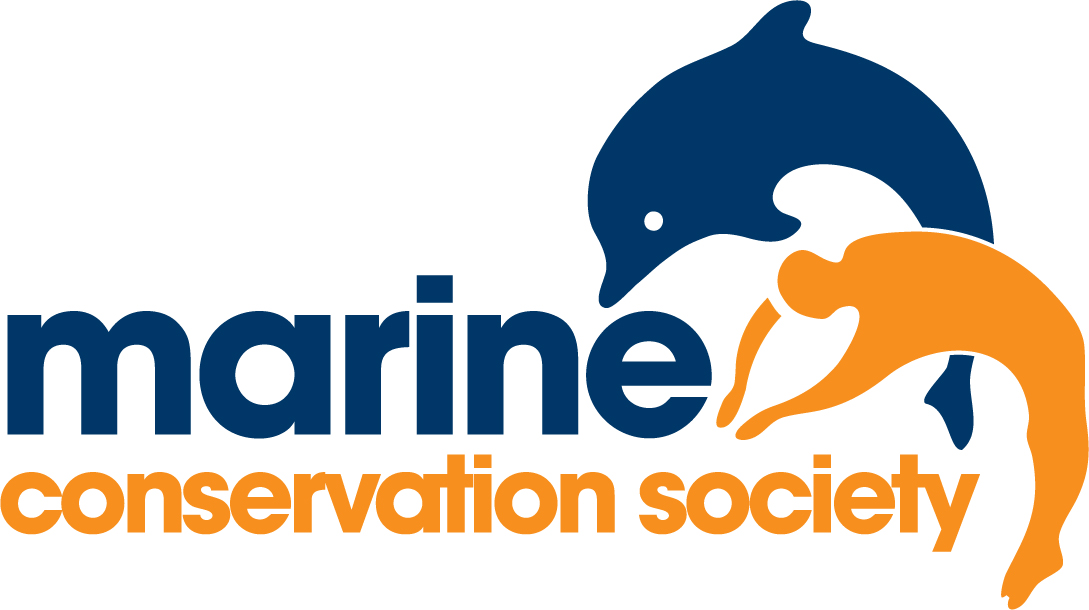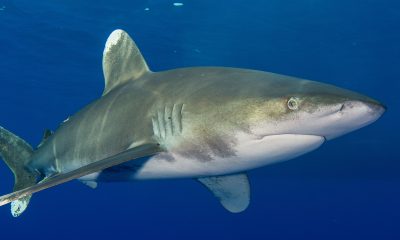News
There’s always a catch when it comes to sustainable seafood

 Latest Marine Conservation Society seafood ratings highlight why consumers must demand more information
Latest Marine Conservation Society seafood ratings highlight why consumers must demand more information
Seafood is a tasty and popular choice whether chosen off the menu, at the supermarket or down the chip shop, and consumers are increasingly aware of the need to buy sustainably.
But, in the absence of clear labelling, working out if you’re making the best choice for fish stocks is a real minefield says the charity that publishes the online Good Fish Guide – www.goodfishguide.com – the Marine Conservation Society (MCS).
MCS says the key to making the right seafood choices is understanding what it is, where it is from and how it is caught or farmed, and using the charity’s Good Fish Guide website, app and pocket guide is the only way to get the full story on seafood sustainability.
The latest version of the guide, published today, shows how important it is for consumers to take the time to use the tools on offer to make sustainable choices when it comes to choosing fish.
The guide uses a simple 5-step rating system to identify fish sustainability – where 1 is a Best Choice, and 5 is a Fish to Avoid.
For instance, lobster, popular in a thermidor or served on its own with salad trimmings, may sound like a safe bet if the label says (though likely it won’t) that it was pot caught off the south west coast, but in fact this is rated 3 and an OK (yellow) choice with some room for improvement. But other lobster fisheries around Scotland, Wales and England are generally over fished with no catch limits, and there is no protection for egg-bearing females, in Wales and Scotland. This leaves animals from those fisheries rated as ones you need to consider carefully before eating (rated 4 – amber – requires improvement) as they are some way from being sustainably caught and require significant improvements to the fisheries.
Bernadette Clarke, MCS Good Fish Guide Programme Manager says: “Choosing sustainable seafood is a complex issue not helped by a lack of clear labelling on most seafood products. That lack of information means that consumers need all the help they can get. Using the Good Fish Guide will point people in the right direction and start the sustainability conversation with the fishmonger or restaurant. If consumers can start asking ‘Is that sustainable?’, seafood suppliers will need to have an answer.”
Other popular seafood with updated ratings in the latest Good Fish Guide are:
Squid, now a trendy starter on many menus and available at the seafood counter and freezer sections of larger supermarkets, are also a mixed bag when it comes to consumer choice. Eleven squid fisheries have either been updated or rated for the first time in the 2018 Good Fish Guide and whilst jig caught squid – a highly selective method – from the English Channel and Scotland are 3 rated (OK), elsewhere, squid have a 5 rating due to a combination of factors including limited stock assessment and poor management – making them a Fish to Avoid.
Dover sole, often seen as a bit of treat eaten only in high end restaurants, is actually a green rated (2 Good Choice) fish for all from the western English Channel, Cornwall or Marine Stewardship Council (MSC) certified from the North Sea. But if the sole on your plate comes trawled from the Irish Sea, or electric-pulse trawled from the North Sea, then it shouldn’t be on your plate at all (rated 5, Red).
Haddock is a fish shop favourite and the newly rated Rockall fishery has been rated 1 for the first time by the Good Fish Guide meaning it’s a great, guilt-free ‘Best Choice’. Haddock from the North Sea and West of Scotland have improved from 3 to 2 meaning it can again be considered a Good Choice after fishing pressure has continued to reduce and the stocks size continues to increase.
However, if you shun fast foods assuming a fish burger may be nothing more than the scrapings off the factory floor, think again. Fast-food giant McDonalds uses Alaskan Pollock in its Filet O Fish and a quick glance at the Good Fish Guide reveals this is a ‘Best Choice’ rated 1 and is MSC certified.
MCS says it’s vital that the public, chefs, retailers and fish buyers keep referring to the Good Fish Guide website, the Pocket Good Fish Guide or the app version on iPhone or android, to ensure they have the most up-to-date sustainable seafood advice.
MCS sustainable seafood work is supported by players of People’s Postcode Lottery.
Hazel Johnstone, Senior Programme Manager within the charities team at People’s Postcode Lottery, says: “With this guide, Marine Conservation Society is making it easier for people to identify where fish has come from and whether it’s sustainable. This initiative, which players of People’s Postcode Lottery have been supporting for the past few years, is helping consumers to make an informed decision before they buy seafood. The fact that the guide’s available on different platforms makes it easily accessible, which is great.”
Check out www.goodfishguide.com for more.
Blogs
Northern Red Sea Reefs and Wrecks Trip Report, Part 2: Wall to Wall Wrecks

Jake Davies boards Ghazala Explorer for an unforgettable Red Sea diving experience…
The second day’s diving was a day full of wreck diving at Abu Nuhas, which included the Chrisoula K, Carnatic, and Ghiannis D. The first dive of the day was onto the Chrisoula K, also known as the wreck of tiles. The 98m vessel remains largely intact where she was loaded with tiles which can be seen throughout the hold. The stern sits at 26m and the bow just below the surface. One of the highlights of the wreck is heading inside and seeing the workroom where the machinery used for cutting the tiles are perfectly intact. The bow provided some relaxing scenery as the bright sunlight highlighted the colours of the soft coral reef and the many reef fish.

Following breakfast, we then headed to the next wreck, which was the Carnatic. The Carnatic is an 89.9m sail steamer vessel that was built in Britain back in 1862. She ran aground on the reef back in 1869 and remains at 27m. At the time, she was carrying a range of items, including 40,000 sterling in gold. An impressive wreck where much of the superstructure remains, and the two large masts lay on the seafloor. The wooden ribs of the hull provide structures for lots of soft corals, and into the stern section, the light beams through, bouncing off the large shoals of glass fish that can be found using the structure as shelter from the larger predators that are found outside of the wreck.

The final wreck at Abu Nuhas was the Ghiannis D, originally called ‘Shoyo Maru,’ which was 99.5m long and built in Japan back in 1969 before becoming a Greek-registered cargo ship in 1980. The ship then ran aground on the reef on April 19th, 1983, and now sits at the bottom at a depth of 27m. Heading down the line, the stern of the ship remains in good condition compared to the rest of the hull. The highlight of the wreck, though, is heading into the stern section and down the flights of stairs to enter the engine room, which remains in good condition and is definitely worth exploring. After exploring the interior section of the ship, we then headed over to see the rest of the superstructure, where it’s particularly interesting to see the large table corals that have grown at the bow relatively quickly considering the date the ship sank. After surfacing and enjoying some afternoon snacks, we made sure everything was strapped down and secured as we would be heading north and crossing the Gulf of Suez, where the winds were still creating plenty of chop.

The next morning, it was a short hop to Ras Mohammed Nature Reserve for the next couple of days of diving. The 6am wake-up call came along with the briefing for the first site we would be diving, which was Shark & Yolanda. The low current conditions allowed us to start the dive at Anemone City, where we would drift along the steep, coral-filled wall. These dives involved drifts, as mooring in Ras Mohammed wasn’t allowed to protect the reefs. As a dive site, Shark & Yolanda is well-known and historically had a lot of sharks, but unfortunately not so many in recent years, especially not so early in the season. However, there was always a chance when looking out into the blue.

The gentle drift took us along the steep walls of the site, with plenty of anemone fish to be seen and a huge variety of corals. It wasn’t long into the dive before we were accompanied by a hawksbill turtle, who drifted with us between the two atolls before parting ways. Between the two reefs, the shallow patch with parts of coral heads surrounded by sand provided the chance to see a few blue-spotted stingrays that were mainly resting underneath the corals and are always a pleasure to see. With this being the morning dive, the early sunlight lit up the walls, providing tranquil moments. Looking out into the blue, there was very little to be seen, but a small shoal of batfish shimmering underneath the sunlight was a moment to capture as we watched them swim by as they watched us.

Towards the end of the dive, we stopped at the wreck of the Jolanda where the seafloor was scattered with toilets from the containers it was carrying. This provided a unique site to make a safety stop, which was also accompanied by a large barracuda slowly swimming by, along with a hawksbill turtle calmly swimming over the reef as the sun rays danced in the distance.
For the next dive, we headed north to the Strait of Tiran to explore the reefs situated between Tiran Island and Sharm El Sheik, which were named after the British divers who had found them. We started on Jackson before heading to Gordons Reef, where we also did the night dive. All the atolls at these sites provided stunning, bustling coral reefs close to the surface and steep walls to swim along, which always provided the opportunity to keep an eye out for some of the larger species that can be seen in the blue. Midwater around Jackson Reef was filled with red-toothed triggerfish and shoals of banner fish, which at times were so dense that you couldn’t see into the blue. Moments went by peacefully as we enjoyed the slow drift above the reef, watching these shoals swim around under the mid-afternoon sun.

The night dive at Gordon’s Reef was mainly among the stacks of corals surrounded by sand, which was great to explore under the darkness. After some time circling the corals, we came across what we were really hoping to find, and that was an octopus hunting on the reef. We spent the majority of the dive just watching it crawl among the reef, blending into its changing surroundings through changes in colour and skin texture. It’s always so fascinating and captivating to watch these incredibly intelligent animals, in awe of their ability to carry out these physical changes to perfectly blend into the reef. Before we knew it, it was time to head back to the boat to enjoy a well-deserved tasty dinner prepared by the talented chefs onboard.
Check in for the 3rd and final part of this series from Jake tomorrow!
To find out more about the Northern Red Sea reef and wrecks itineraries aboard Ghazala Explorer, or to book, contact Scuba Travel now:
Email: dive@scubatravel.com
Tel: +44 (0)1483 411590
Photos: Jake Davies / Avalon.Red
Marine Life & Conservation
Double Bubble for Basking Sharks

 The Shark Trust is excited to announce that, for two more days only, all donations, large or small, will be doubled in the Big Give Green Match Fund!
The Shark Trust is excited to announce that, for two more days only, all donations, large or small, will be doubled in the Big Give Green Match Fund!
Donate to Basking in Nature: Sighting Giants
The Shark Trust is hoping to raise £10k which will be doubled to £20k. This will go towards Basking in Nature: Sighting Giants. And they need YOUR help to reach they’re goal.
The Shark Trust’s citizen science project is to monitor and assess basking sharks through sightings; encouraging data collection, community engagement, and promoting nature accessibility. This initiative aims to enhance health and wellbeing by fostering a deeper connection with British Sharks.
Campaign Aims
- Increase citizen science reporting of Basking Sharks and other shark sightings to help inform shark and ray conservation.
- Provide educational talks about the diverse range of sharks and rays in British waters and accessible identification guides!
- Create engaging and fun information panels on how to ID the amazing sharks and rays we have on our doorstep! These can be used on coastal paths around the Southwest. With activities and information on how you can make a difference for sharks and rays!
- Promote mental wellbeing through increasing time in nature and discovering the wonders beneath the waves!
Donate, and double your impact. Click Here
-

 News3 months ago
News3 months agoHone your underwater photography skills with Alphamarine Photography at Red Sea Diving Safari in March
-

 News3 months ago
News3 months agoCapturing Critters in Lembeh Underwater Photography Workshop 2024: Event Roundup
-

 Marine Life & Conservation Blogs2 months ago
Marine Life & Conservation Blogs2 months agoCreature Feature: Swell Sharks
-

 Blogs2 months ago
Blogs2 months agoMurex Resorts: Passport to Paradise!
-

 Blogs2 months ago
Blogs2 months agoDiver Discovering Whale Skeletons Beneath Ice Judged World’s Best Underwater Photograph
-

 Gear Reviews2 months ago
Gear Reviews2 months agoGear Review: Oceanic+ Dive Housing for iPhone
-

 Marine Life & Conservation2 months ago
Marine Life & Conservation2 months agoSave the Manatee Club launches brand new webcams at Silver Springs State Park, Florida
-

 News3 months ago
News3 months agoWorld’s Best Underwater Photographers Unveil Breathtaking Images at World Shootout 2023

















